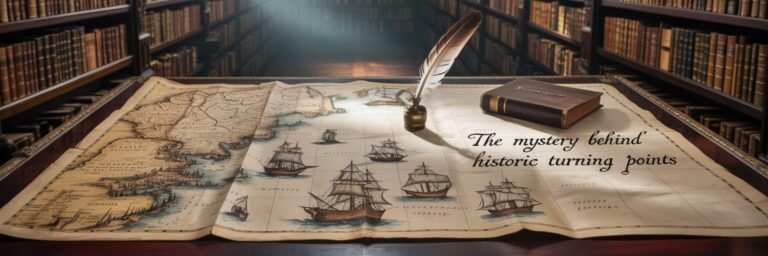INTRODUCTION
Woven within the tapestry of time, the history of prominent cities, from Baghdad to Rome, has been etched time and again for their influence on human civilization. But, beneath the popular chronicles, lies the untold stories – occurrences that piqued lesser interest from historians, yet encapsulate the essence of these cities and together, they reveal the unique, ground-level perspective of their historical voyage. This article aims to uncover these hidden narratives and illuminate the underrepresented aspects of historical cities.
HISTORICAL BACKGROUND
Turning the pages to our first city, Alexandria. Founded by Alexander the Great in 331 BC, it was a city that prided itself on its splendid library and the towering Pharos lighthouse, considered one of the Seven Wonders of the Ancient World. But beyond these celebrated achievements, Alexandria was an epicenter of new ideas, pioneering the golden era of science, culture, medicine, and religion.
Similarly, positioned on the eastern planes of China, Nanjing, formerly the southern capital of the Ming dynasty, was widely known for its Wall, designed and built by Emperor Zhu Yuanzhang in 1368 AD; a feat of magnificent proportions that stood as the emblem of the city. But beneath that, Nanjing carried a more profound legacy, one of resilience and reinvention.
From eastern China, we travel to the west, to ancient Rome. Rome, the city of an empire that reigned superior for nearly 500 years, has long been acknowledged for its Colosseum and the Roman forum. However, Rome was also a cradle of law, establishing legal systems that continue to influence modern governance.
THEORIES AND INTERPRETATIONS
Certain theories intimate exciting interpretations of these cities. In the case of Alexandria, some argue that the city portrayed the evolution of intellectual freedom. According to historian Elizabeth Cavanaugh, the Library of Alexandria was not just a mere library, but a symbol of knowledge and dialogue. It housed not only books but discussions, debates, and open exchange of ideas among scholars from various disciplines.
In the case of Nanjing, historian Zhang Hong presents the concept of “reinvention.” Nanjing experienced multiple invasions, yet every time it was devastated, it rose again, reinventing itself. This signifies the city’s enormous resilience and epitomizes the heart of the Chinese spirit.
Ancient Rome, according to Professor George Takis, represents a cradle of law. Roman legal structure is credited for the codification of laws, an element still wielded across judicial systems globally. Rome’s historic influence on justice is almost as profound as its architectural prowess.
MYSTERIES AND CONTROVERSIES
Even amidst these grand narratives, central to these cities lie episodes shrouded in mysteries and controversies. For instance, the descent of the remarkable Library of Alexandria. Various theories speculate alternate accounts of its loss—from Julius Caesar’s inadvertent destruction in 48 BC to its gradual decline during the Roman Period.
In Nanjing, controversy revolves around the Zheng He voyages. Zheng He, the legendary navigator, allegedly embarked on seven grand voyages, but their authenticity has been widely debated, with some claiming them to be exaggerated renderings.
Roman history also bristles with unsolved conundrums. The myth of Remus and Romulus, Rome’s legendary founders, threads a tale of murder and divinity, leaving historians in continual debate over the actual birth of the city.
SYMBOLISM AND CULTURAL SIGNIFICANCE
The symbolism inherent within these cities is undoubtedly part of what makes them so captivating. Alexandria symbolized a beacon of knowledge and intellect, ensigning a spirit of untempered inquiry, and dialogue. Nanjing, with its resilient history, emerged as a symbol of endurance for Chinese civil society.
Rome, the ‘Eternal City,’ birthed the language of signs and symbols in its art, architecture, and literature—a practice that is inspiringly visible in western civilization today—making it a symbolic seat of cultural legacy.
MODERN INVESTIGATIONS
Present-day research has unearthed fresh insights into these cities. Modern archaeological excavations in Alexandria are unraveling lost parts of the ancient metropolis, dwelling into the forgotten layers of its iconic monuments.
Geohistorical investigations in the form of GIS mapping in Nanjing is enabling a profound understanding of the city’s evolution, and the explorations into Roman law by legal historians paint a more nuanced picture of Rome’s contribution to global legal structures.
LEGACY AND CONCLUSION
Traversing through the epochs of historic cities nourishes profound respect for their untold stories. The intellectual spirit of Alexandria, the resilience of Nanjing, and the legal foresight of Rome are chapters worthless to overlook.
The narratives of their saga, filled with intriguing theories, mysteries, and rich symbolism, inject an unparalleled understanding of human civilization’s journey. Current investigations further reveal the unappreciated spectrum of influences that these cities have on our modern world.
In essence, the untold stories of historic cities underline the rich quilt of human experience, transcending time and geography to- speak universal truths of resilience, discovery, and progress, and remind us never to forget that within every city, beneath well-documented triumphs, exists a pulsating story waiting patiently to be discovered and shared.






